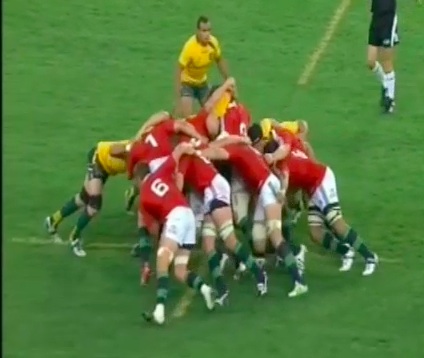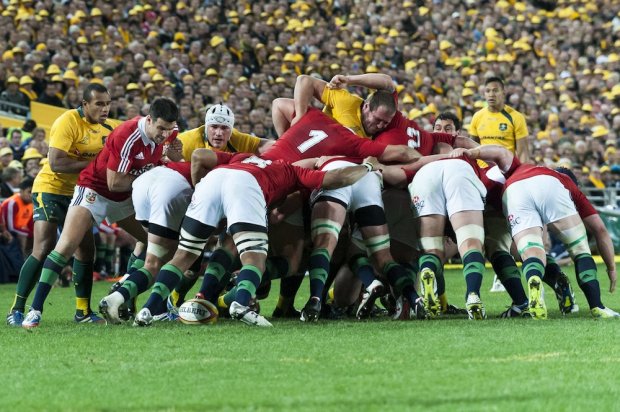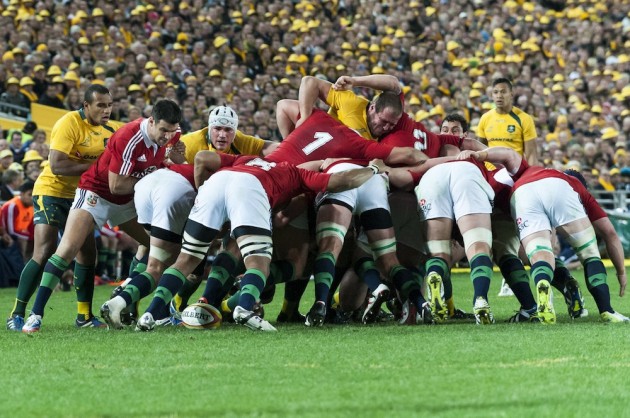Scheduled Website Maintenance
We’re currently in the process of moving to a new and improved server environment. During this transition, the website may experience brief interruptions or temporary outages.
We appreciate your patience while we complete this upgrade. Service will return to normal shortly, with improved performance and reliability.
Thank you for your understanding.
The fallout from the British Lions’ “demolition” of the Wallaby scrum in the third Test at Sydney was traumatic and well-publicised. The microscope was focused on the Australian front-row as a whole, and Ben Alexander in particular and they copped a lot of flak in the media afterwards.
Was it really as bad as it appeared first time around? Is the Wallaby front-row really so poor that their first-choice tight-head prop cannot last more than 24 minutes before being yellow-carded for persistent infringement?
In my opinion, the answer to both questions is ‘No’ – or ‘Non’ to M.Poite.
Wales have history
In the Six Nations season that had finished just before the Lions flew to Australia, the Wales team that won the championship left a litter of scrum controversy behind them after the games against Italy, Scotland and England. The percentage of scrum completions was very low, and scrum penalties had a disproportionate impact on all three games.
In the Scotland game, only 3 of 12 scrums were completed successfully and the Welsh front-row harvested 4 outright penalties, 2 free-kicks, one lost 5m scrum position for Scotland, and 6 points kicked. After the game the Scotland coach Scott Johnson said,
“We were frustrated by the fact we got conned”.
Against Italy, with M.Poite in charge, the Italian tight-head Martin Castrogiovanni was yellow-carded in the 58th minute for persistent infringement.
After the final game of the season at Cardiff, the England [and Lions] forward coach Graham Rowntree repeated Johnson’s concerns:
“I sat up on Saturday night and watched the game again forensically… I’m annoyed at a lot of the outcomes and I will be speaking to the IRB to get some clarification about it.”
Every scrum sequence up to the 62nd minute ended in a penalty or free-kick, and 6 of the 7 decisions were awarded to Wales. Three of the scrum sequences went on for well over a minute with a number of resets, which increased the pressure on the referee to ‘resolve the scrum’. Four of the calls could realistically have gone either way, as Rowntree indicated.
The Third Test against the Lions – 24 fateful minutes!
With 10 Welsh players starting for the Lions in the third test, and more specifically three Wales tight forwards – Alun-Wyn Jones in the second row, Adam Jones at tight-head and Richard Hibbard at hooker – the Lions showed their hand. They were determined to copy Wales’ methods and make the match a murky scrum-fest, especially with a merciless, penalty and yellow-card giving referee like M.Poite in charge of the game. Now let’s look at the scrums leading up to Ben Alexander’s departure via yellow-card in the 24th minute of the match.
Of the seven scrums in this period:
- Two are completed successfully
- Two are free-kicks against the Wallabies for ‘early engagement’
- Three are penalties on the Wallabies. One is given against Benn Robinson for pushing at an angle, two are given against Ben Alexander for first popping out of the scrum and then collapsing under pressure.
Was Romain Poite right – was Ben Alexander really that awful?
In my opinion two of M.Poite’s decisions were questionable. The other scrum penalty against Alexander was fuelled by the inexperience of the flanker packing on his side.
- At the second ‘early engagement’ [13:25] there is no obvious ‘jump’ by the Wallabies front row, and yet it is this decision that prompts a warning for persistent infringement by Poite.
- The penalty that leads directly to Ben Alexander’s yellow card [23:50] looks like nothing more than an accidental collapse. Alexander wins the hit and gets in a good first stride at this scrum before it destabilizes, and it is impossible to determine with any certainty who is responsible for the scrum going down.
- The penalty against Alexander for popping up [14:20] is caused indirectly by Ben Mowen failing to slide up on Alex Corbisiero and function as a ‘fourth prop’. All good tight-head flankers at Test level will shift up on to the opposing loose-head when they feel their prop coming under pressure [see the clip below with the France flanker coming up on Tony Woodcock], but Mowen fails to do so and it allows Corbisiero to come around the corner on Alexander and get the angle he wants. My guess is that Mowen is not familiar with this technique because he plays his rugby for the Brumbies at no.8.
The other penalty against the Wallaby front row was created by a technique which I will examine below which is peculiar to Northern Hemisphere sides on their own ball.
In retrospect, neither Ben Alexander nor the Wallaby front row as a unit were as bad as the game painted them. Although the Lions clearly had some advantage in the scrums, it was magnified by a couple of questionable calls by M.Poite, a technical malfunction on one side of the Australian scrum and a yellow card delivered on refereeing momentum rather than the individual merits of the scrum at which it occurred.
How the Lions’ ‘walk’ on their own ball really works
There are three scrums in the above clip package where the Lions try to walk their own put-in [4:50, 10:00 and 19:30] forward, principally by manipulating an advantage on one side of the scrum or the other. They kept on doing this throughout the game, even when Sekope Kepu came on for Alexander [see a second half scrum at 50:30]. The technique by which this effect is achieved is very shrewd and designed to create an optical illusion of ‘scrum dominance’ in the referee’s mind.

If we look at the penalty-winning example in the clip package at 10:40, it is quite evident that the Lions are not trying to stay square and push straight. Instead they are trying to create an imbalance or a ‘mismatch’ on one side of the scrum or the other.
Alex Corbisieros’ first movement is to take two steps to his left [10:49]. He is not trying to drive straight through the Wallaby tight-head but walk around him. At the same time the Lions 2 and 3 are clearly angling across the tunnel to their left. At 10:51 it is only the Lions’ locks and number 8 who are going straight forward. The two front-rows have rotated fully through 90 degrees and are facing the sidelines not the posts.
The illusion is complete and the referee awards a penalty. If you look carefully at the movement of Ben Alexander in this example, he hardly goes backwards at all, he simply rotates outwards as the Lions walk around him. This is especially obvious in the aerial shot at 11:15, where Corbisiero ends up pulling, rather than pushing Alexander upfield with him!
What this means for the Wallabies
Stephen Moore and Ben Alexander clearly understood the importance of this technique, because they employed it as a very effective weapon against all three of the Brumbies’ play-off opponents in the Super 15. Suddenly, from appearing to be a no-hoper, Ben Alexander became the most dominant tight-head scrummager in the knockout stages of the competition!
Ironically they produced a perfect example in the 50th minute of the final of the Chiefs only to be called back by Craig Joubert for the scrum going through 90 degrees. This was the right decision, although it was the first example I have seen of ‘the walk’ being refereed in this way.
http://youtu.be/o2etNF074AI?t=1h12m25s
Stephen Moore is an outstanding Test match hooker, of that there is no doubt. He would start for most Test sides in the world. Despite the trauma of the third Lions Test, Ben Alexander remains a capable tight-head, as elite coaches like Laurie Fisher and Bob Dwyer understand. Ewen McKenzie was right to pick him in his squad for the Rugby Championship.
With only roughly two dozen Test matches between now and the 2015 World Cup, he now has to make the more difficult decision of where to pump in his development time. Does he persist with Alexander or give Sekope Kepu an extended run? On the other side, in my opinion the decision to drop Benn Robinson was also bold but justified. Robinson has never really recovered the form of 2010 since rehabbing from a nasty knee injury before the last World Cup.
McKenzie can now either go with an all-Brumby front row of Sio-Moore-Alexander or pick James Slipper and Kepu to bookend Moore after their promising moments off the bench during the Lions series. Whoever he chooses, they will not experience anything like the technical or refereeing examination of the Lions Third Test against their opponents in the Rugby Championship, that’s for sure.


